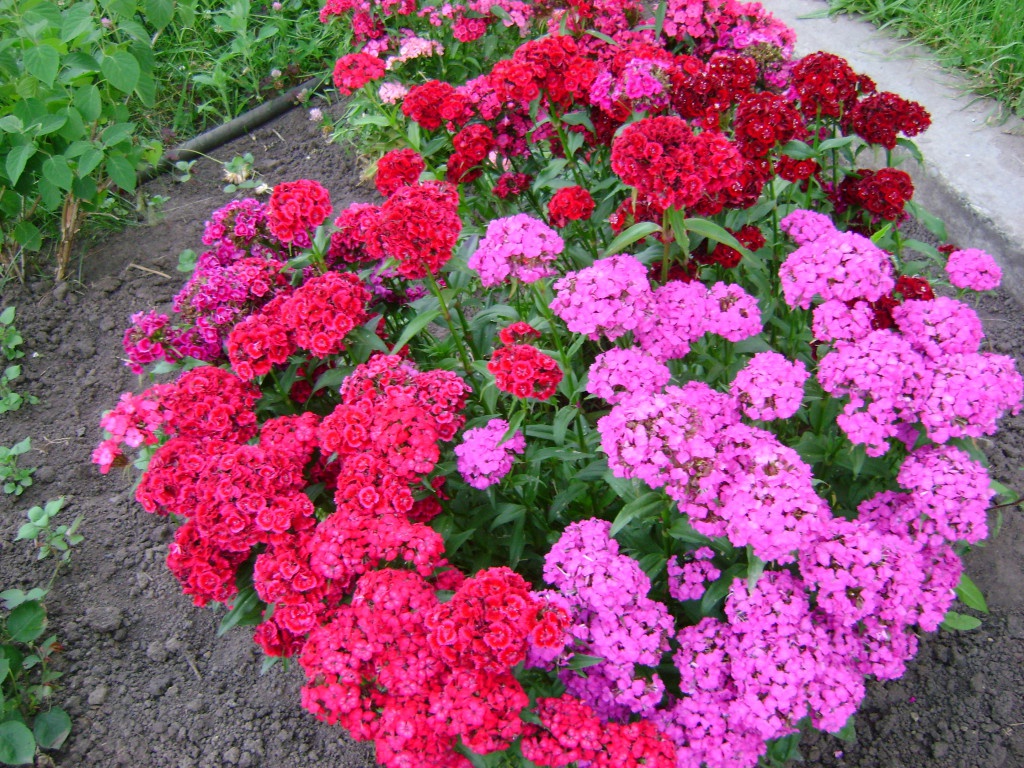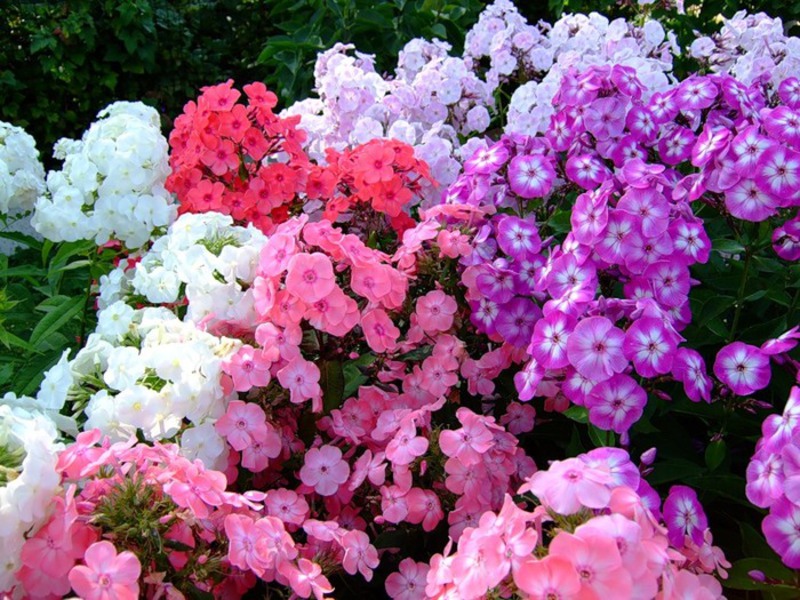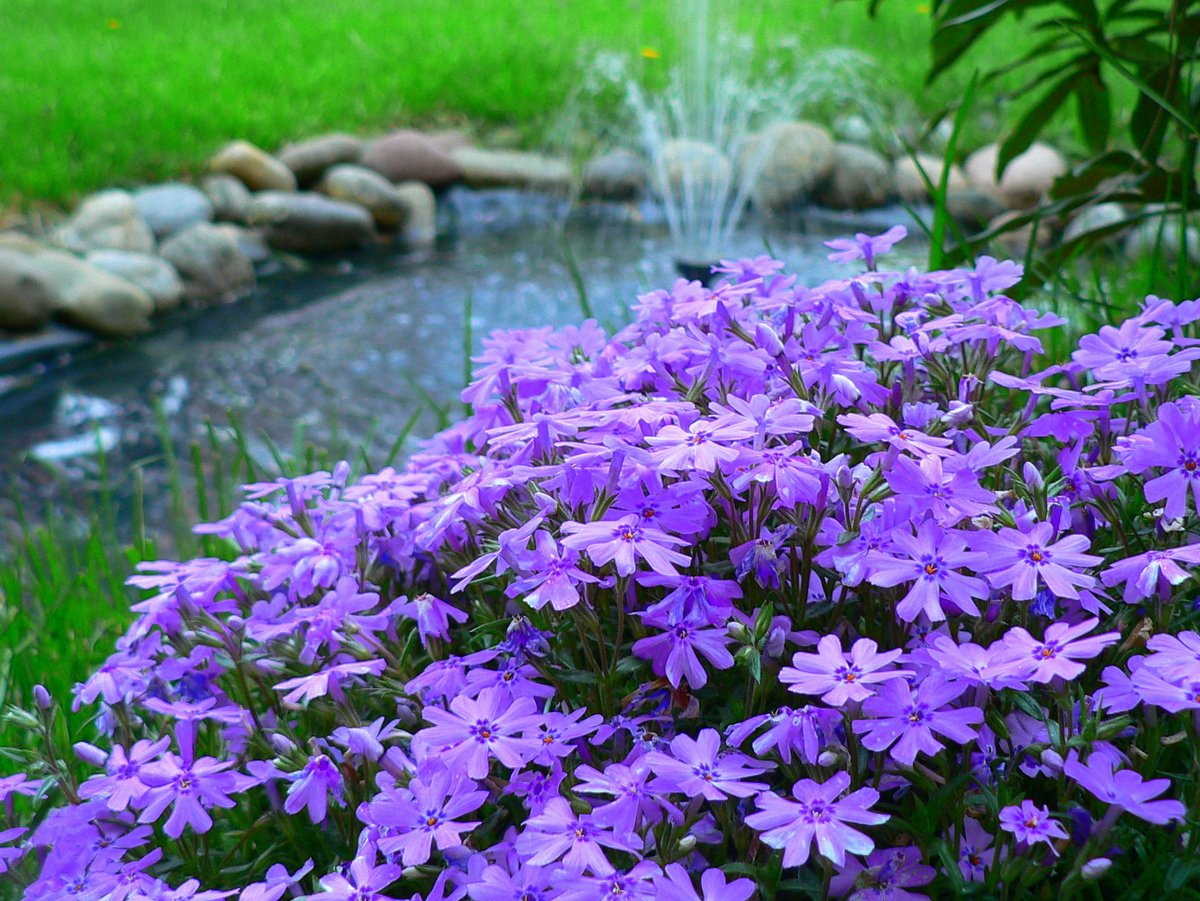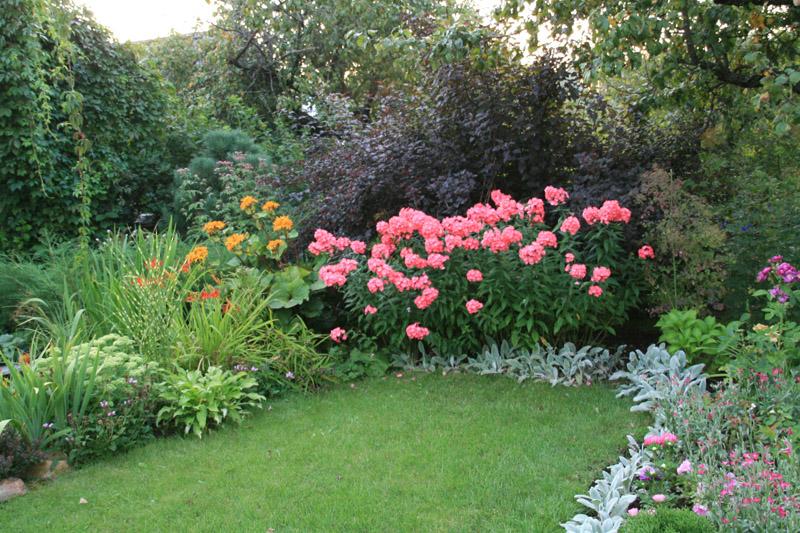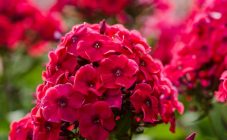Content:
Phlox belongs to flowering herbaceous plants of the Sinyukhovye family. There are 85 species, 40 cultivated species. Most of them are perennials. There are also annual representatives and shrubs. On the territory of Russia, Siberian phlox grows, which belongs to mountain creeping plants. This is the only representative of wild species on the territory of the Russian Federation. The native land of flowers is North America, where they can be found in the wild.
What are phloxes? The plant got its name in 1737, given by Karl Linnaeus. Translated from Greek, it means "flame". There is a version that they received this name for the bright colors of wild species. According to legend, the flowers grew on the site of torches dropped by Odysseus's sailors.
Phlox in the garden is used everywhere, due to their variety and beautiful appearance. They can be found both in parks and in personal plots and dachas. The popularity of garden phlox is due to simple care. At low cost, they delight the owners for a long time with their beauty and unobtrusive aroma with a slight bitterness.
Phlox description
To find out everything about phlox, you need to read their description.
So what do phloxes look like? The flowers are small - from 2 to 4 cm, collected in an inflorescence, where, depending on the variety, there can be up to 90 pcs. The colors can be both monochromatic and various multicolored. The flower consists of 5 petals, 5 stamens and 1 pistil. The fruit with a large number of seeds is an oval capsule. Leaves are oval, slightly elongated, opposite.
The flowering time depends on the variety. Plants are divided, depending on the flowering period, into:
- Spring.
- Summer.
- Autumn.
If the first group begins to bloom in May, the second - in the summer, the third - pleases with its flowering before the onset of frost. So what color are phloxes? The color depends on their type and variety.
Phlox analogs
Phlox lovers can plant flowers similar to phlox on the site. This is both hydrangea and gilia - an easy-care plant brought from America. The common yarrow and allisum are similar to them. Some growers ask themselves: are phlox and hydrangea the same thing? The answer is obvious: their flowers are just similar, but the differences between phlox and hydrangea are immediately noticeable.
Varietal features of phlox
There are more than 65 representatives in the genus of these flowers, which are divided into 3 groups:
- Shrub;
- Loose sod;
- Creeping.
The group of bush phlox is divided into 2 subgroups:
- l Tall;
- l Stunted.
Tall bush phlox
This subgroup includes flowers of phlox species paniculata and smooth. The panicled phlox is rather large, grows from 50 to 150 cm, its height depends on the specific variety. The flowers are grouped in paniculate inflorescences, the arrangement of the leaves is cruciform. Flowering time is from July to the end of September. The colors can be either lilac-lilac or purple, there is also a white color.
A smooth phlox flower grows up to 100 cm.The flowers are collected in tall inflorescences, have a light purple color. Bloom in the first summer months.
Low-growing bush phlox
This subgroup unites:
- Phlox is Caroline, whose height reaches 60-70 cm. It has monochromatic flowers collected in panicles. The color is predominantly purple, sometimes pink. Long bloom - from early summer to September.
- Hairy, got its name from the characteristic pubescence of the leaves. Its height reaches 40-50 cm. Fragrant flowers are collected in umbrella-shaped inflorescences. The coloring is bright purple or pink with white splashes.
- Adorable, small in height - from 20 to 35 cm. Flowers are collected in corymbose or umbellate inflorescences. Flowering lasts 35 days and begins in May. The plant pleases with pink or purple flowers, less often white and fuchsia flowers.
Also, this group includes the Arends variety, obtained by crossing the paniculate and splayed representatives. A low plant, up to 50 cm, with small light purple or lilac-pink flowers, collected in paniculate inflorescences.
Loose sod phlox
This is an intermediate group between bush and creeping species. These include splayed phlox and victorious. The height of both does not exceed 30 cm. Moreover, the first has erect thin stems with fragrant flowers of a bluish-lilac shade with a darker center, the color is during May. The second species forms a dense carpet with purple or violet-lilac flowers, sometimes white flowers are found.
Creeping phlox
This is a subgroup of low flowers that grow up to 30 cm. Represented by the following varieties:
- Dwarf. It can reach 30 cm. One of the tallest in this subgroup. Has a variety of flower colors: from white and light pink to purple.
- Subulate. The stems spread along the ground, reaching a height of 5 to 17 cm. Small flowers reach a diameter of 1.5 cm, can be arranged one by one or be collected in inflorescences. Color - from the second decade of May to the first decade of June, sometimes re-flowering is observed in September. Flowers, depending on the variety, can be white, purple, pink and brighter colors. They have a pleasant aroma. The plant keeps beautiful greenery even under snow. It grows at a slow pace.
- Forked. Received this name for the forked petals. The height of the pubescent stem is from 10 to 15 cm, the leaves are hard.
- Phlox Douglas, its height does not exceed 10 cm. The color of flowers is from light to dark purple, can be white. An amazing property is double flowering: the first time - in May, the second - in August.
- Snowy. Although the name suggests white flowers, colors range from light pink to reddish orange.
Growing technology
For the successful cultivation of phlox, it is necessary to choose a well-lit place for them. When grown in the shade, flowering occurs later. These flowers are not very demanding on the soil, but the best results can be achieved if you select nutritious soil. The planting pit is prepared up to 30 cm deep. Sand is poured onto its bottom, then drainage takes place. Only after that, the root system of the flower is placed and covered with earth, which is tamped and watered.
When planting in spring, it is better to do it in mid-May, in autumn the optimal time is late August-early September. After planting, ensure that the soil is always moist for three weeks. In this case, the plant will take root better. Further care - watering and removing weeds, also the plants will need to be fed.
Diseases and pests
Although phloxes are quite unpretentious flowers, do not forget that they can also be susceptible to disease. Most often they become infected with powdery mildew. The first sign of this disease is the appearance of plaque on the green parts.Treatment must be started immediately. Diseased plants should be disposed of. For prevention, the cultivation technology is observed.
Also, with improper cultivation, diseases such as verticillary wilting (leaves turn yellow and then dry up), phomosis (the first sign of the appearance of yellow spots), gray rot can be observed.
In the place where diseased plants were found, phloxes are not planted for 4 years.
Phlox in landscape design
Phlox are versatile flowers that can be a decoration of any suburban area. They are planted in flower beds, flower beds, used to decorate garden paths. You can safely show phlox flowers and compositions with them even to skilled designers. They leave no one indifferent, they transform the landscape.
When choosing a variety, not only the timing of flowering, but also the appearance of the flower are taken into account, since the greenery will serve as an ornament throughout the season.
How are phlox used in garden design? A successful combination is a joint phlox planting with a daylily and a host. Such a composition will look advantageous throughout the season, highlighting, depending on the timing, one of the flowers.
The choice of variety depends on the planting site. Low-growing flowers can be planted in windy, elevated areas. In sunny places, it is better to plant tall representatives, giving preference to those varieties that do not fade. For example, this is phlox flame. Paniculate species are very beautiful during the flowering period. They can become a real garden decoration, delighting not only with a variety of flowers, but also with a delicate aroma.
Phlox has the following meaning - an ornamental perennial plant with beautiful varied flowers and a pleasant aroma. They plant it in open ground. Proper care is the key to successful cultivation of a beautiful street flower. This is not a poisonous flower, on the contrary, it is used in folk medicine, as an expectorant, in the treatment of colds and diseases of the gastrointestinal tract. It is also an important element of garden decor.
